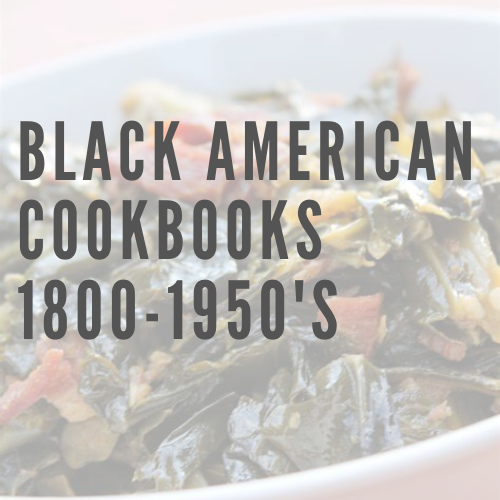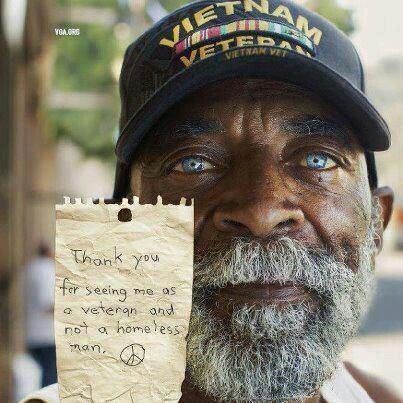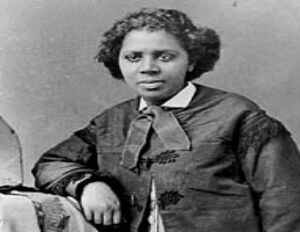16 Black American Cookbooks from 1800-1950s
According to the Michigan State Library, between 1800 and 1900, four cookbooks are known to have been written by Black Americans. They include Robert Roberts, The House Servant’s Directory (1827), Tunis G. Campbell, Hotel Keepers, Head Waiters, and Housekeepers’ Guide (1848), Abby Fisher, What Mrs. Fisher Knows About Old Southern Cooking. (1881), E.T. Glover, The Warm Springs Receipt-Book (1897).
Earlier books with the subject heading “African American cooking” were written by white authors who included recipes they had learned from black cooks. It’s hard to know which ones they were. There were no dust jackets with author photos during most of this period. However, black authors wrote books after the civil rights movement.
Search the MSU library catalog for 200 Black American cookbooks published since 1960.
16 Black American Cookbooks from 1800-1950s

Carolina Rice Kitchen: The African Connection
Karen Hess (Author)
Description
This is a history of the influence of rice and African culture on the economy and households of the Old South. Included is a facsimile of Carolina Rice Cook Book.

Soul Food: The Surprising Story of an American Cuisine, One Plate at a Time
Adrian Miller (Author)
Description
In this insightful and eclectic history, Adrian Miller delves into the influences, ingredients, and innovations that make up the soul food tradition. Focusing each chapter on the culinary and social history of one dish–such as fried chicken, chitlins, yams, greens, and red drinks–Miller uncovers how it got on the soul food plate and what it means for African American culture and identity.

Cornbread & Collard Greens: How West African Cuisine & Slavery Influenced Soul Food
Deah Berry Mitchell (Author)
Description
Everyone loves “Southern” food, but until recently few acknowledged the heavy influences of soul food, which itself was born of necessity from West African cuisine and slavery.
Deah effortlessly infuses her love of history with her personal familial narratives and carefully crafts recipes she’s designed as a nod to a skill her ancestors perfected – creating delicious meals out of not only a necessity but imagination. Her unique cooking style is complemented by her influences from various countries she has visited.

The Southern Sympathy Cookbook: Funeral Food with a Twist
Perre Coleman Magness (Author)
Description
“He had a life-long love affair with deviled eggs, his homemade canned fig preserves, and buttermilk served in martini glasses garnished with cornbread.” –Obituary from Gulfport, Mississippi
So-called “funeral food” is having a moment. Comforting casseroles; jugs of sweet tea; creamy, cheesy potatoes–all these foods provide sympathy and sustenance for the bereaved. The Southern Sympathy Cookbook includes unexpectedly humorous obituaries and anecdotes alongside staples of Southern funerals such as:

Stirring the Pot: A History of African Cuisine
James C. McCann (Author)
Description
Stirring the Pot offers a chronology of African cuisine beginning in the sixteenth century and continuing from Africa’s original edible endowments to its globalization. McCann traces cooks’ use of new crops, spices, and tastes, including New World imports like maize, hot peppers, cassava, potatoes, tomatoes, and peanuts, as well as plantain, sugarcane, spices, Asian rice, and other ingredients from the Indian Ocean world. He analyzes recipes, not as fixed ahistorical documents, but as lively and living records of historical change in women’s knowledge and farmers’ experiments. A final chapter describes in sensuous detail the direct connections of African cooking to New Orleans jambalaya, Cuban rice and beans, and the cooking of African Americans’ “soul food.”

My Official Goat Meat Products Cookbook: Representing African-American Slave Descendants, Africans and Carribeans
Sharon Hunt Rd (Author)
Description
“MY” Official Goat Products Cookbook is a combination of goat meat recipes from Southern states, Africa and the Carri beans with desserts, plantation popular dessert recipes and short important facts about the possible kinship bonds and food selections bonds from Africa and former African slaves.
The main purpose of the cookbook is to promote the study of where Africans may have come from in Africa during the slave trade. Hopefully, the book will be an excellent African= American Source.

High on the Hog: A Culinary Journey from Africa to America
Jessica B. Harris (Author)
Description
Acclaimed cookbook author Jessica B. Harris weaves an utterly engaging history of African American cuisine, taking the reader on a harrowing journey from Africa across the Atlantic to America, and tracking the trials that the people and the food have undergone along the way. From chitlins and ham hocks to fried chicken and vegan soul, Harris celebrates the delicious and restorative foods of the African American experience and details how each came to form an important part of African American culture, history, and identity. Although the story of African cuisine in America begins with slavery, High on the Hog ultimately chronicles a thrilling history of triumph and survival. The work of a masterful storyteller and an acclaimed scholar, Jessica B. Harris’s High on the Hog fills an important gap in our culinary history.

Southern Cookbook 322 Old Dixie Recipes
Lillie S. Lustig (Author)
Description
Soul Food, Comfort Food, just plain old-fashioned Good Food you will find in the recipes contained in this delightful CookBook. The Southern United States is famous for it’s cooking from Fried Chicken to Shrimp Creole the food is a culture of many cultures. There is something for everyone to enjoy.

Mandy’s Favorite Louisiana Recipes
Natalie Scott (Author)
Description
Three hundred authentic recipes from New Orleans’ Creole home cooks fill the pages of this culinary classic. First published in 1929 and compiled by New Orleanian Natalie V. Scott, from the recipes of cooks she had employed through the years, this cookbook contains such gastronomic delights as Cream of Crab Soup, Fried Tomatoes, Grillades Piquantes, Pecan Pralines, and a variety of Creole sauces. These are the same mouth-watering favorites loved today by locals and tourists alike.

The Southerner’s Cookbook: Recipes, Wisdom, and Stories
Editors of Garden and Gun (Author)
Description
From Garden & Gun–the magazine that features the best of Southern cooking, dining, cocktails, and customs–comes an heirloom-quality guide to the traditions and innovations that define today’s Southern food culture, with more than 100 recipes and 4-color photography throughout.

Mama Dip’s Kitchen
Mildred Council (Author)
Description
Mama Dip’s Kitchen showcases the same down-home, wholesome, everyday Southern cooking for which its namesake restaurant is celebrated. The book features more than 250 recipes for such favorites as old-fashioned chicken pie, country-style pork chops, sweet potatoes, fresh corn casserole, poundcake, and banana pudding. Chapters cover breads and breakfast dishes; poultry, fish, and seafood; beef, pork, and lamb; vegetables and salads; and desserts, beverages, and party dishes.

The Taste of Country Cooking
Edna Lewis (Author)
Description
In recipes and reminiscences equally delicious, Edna Lewis celebrates the uniquely American country cooking she grew up with some fifty years ago in a small Virginia Piedmont farming community that had been settled by freed slaves.

Aunt Caroline’s Dixieland Recipes: A Rare Collection of Choice Southern Dishes
Emma McKinney (Author)
Description
Published in 1922, this is a collection of choice southern dishes drawn from the treasured memories of Aunt Caroline Pickett, a famous old Virginia cook. Includes various biscuits and other breads, beverages, cakes, candy, meats, pickles, pies and desserts, salads and many more delicacies from the southern kitchen.

Rufus Estes’ Good Things to Eat: The First Cookbook by an African-American Chef
Rufus Estes (Author)
Description
Born a slave in 1857, Rufus Estes worked his way up from a Pullman Private Car attendant to a job preparing meals for the top brass at one of the country’s largest steel corporations. This cookbook, the first to be written and published by a black chef, includes a number of dishes from Estes’ vast culinary collection.

What Mrs. Fisher Knows about Old Southern Cooking
Abby Fisher (Author)
Description
This is a wonderful collection of one-hundred and sixty authentic and tasty recipes of the Old South. Originally published in 1881, it was the first African-American cookbook. Prior to Applewood’s edition, it had been reprinted only once in a limited edition of one hundred copies.

The Jemima Code: Two Centuries of African American Cookbooks
Toni Tipton-Martin (Author)
Description
Winner, James Beard Foundation Book Award, 2016
Winner, Art of Eating Prize, 2015
Winner, BCALA Outstanding Contribution to Publishing Citation, Black Caucus of the American Library Association, 2016
The Jemima Code presents more than 150 black cookbooks that range from a rare 1827 house servant’s manual, the first book published by an African American in the trade, to modern classics by authors such as Edna Lewis and Vertamae Grosvenor.

The House Servant’s Directory: A Monitor for Private Families
Robert Roberts (Author)
Description
“In order to get through your work in proper time, you should make it your chief study to rise early in the morning; for an hour before the family rises is worth more to you than two after they are up.”
So begins Robert Roberts’ The House Servant’s Directory, first published in 1827 and the standard for household management for decades afterward. A classic survey of work, home life, and race relations in early America, the book was the result of many years of Roberts’ personal and professional experiences. One of the first books written by an African-American and published by a commercial press, this manual for butlers and waiters offers keen insight into the social milieu, hierarchy, and maintenance of the antebellum manor.
Description
This is a history of the influence of rice and African culture on the economy and households of the Old South. Included is a facsimile of Carolina Rice Cook Book.
Disclosure
If you like what we do, you can support us through our chosen links, which earn us a commission.
Gertrude Jeannette-First Woman Cabdriver Who Turned Broadway Actor
Gertrude Hadley Jeannette became the first woman in New York City licensed to drive a motorcycle. She was the first woman licensed to drive a cab. She became the first black actor to appear on National Television.
Playwright, producer, director, and actress of the stage and screen, Gertrude Hadley Jeannette, was born in Urbana, Arkansas, on November 28, 1914, to Willis Lawrence Hadley and Salley Gertrude Crawford Hadley. Jeannette was raised in Arkansas, attending Dunbar High School in Little Rock. She had plans to attend Fisk University; instead, she eloped in 1934 to New York City with Joe Jeannette II, a prizefighter and president of the Harlem Dusters, a motorcycle club.
Civil Rights
According to the Encyclopedia of Arkansas, Ms. Jeannette and her husband, Mr. Jeanette, became involved in the civil rights movement. When American singer, actor, and activist Paul Robeson came to New York City to deliver a speech, Joe Jeannette was one of his bodyguards. In an interview, Gertrude Jeannette remembered Robeson’s visit as the first time she saw the Ku Klux Klan: “They came out to lynch Paul Robeson. And I said, ‘Oh my god.’ I said, ‘I lived in the South all my life and never heard of this…Ku Klux Klan.’ This is the first time I saw the robes and everything. So my husband said, ‘Get to the motorcycle! Get to the motorcycle!’ And then we rushed Robeson out of there. And all the motorcycles cranked up and…got him out of there.”
Motorcycle /Cab Driver
 In 1935, two years after moving to New York City, she became the first woman to get a motorcycle license in New York City, and she joined her husband’s motorcycle club in the early 1940s. In 1942, she took and passed the cab driver’s test and became the first female cab driver in New York City.[3]In
In 1935, two years after moving to New York City, she became the first woman to get a motorcycle license in New York City, and she joined her husband’s motorcycle club in the early 1940s. In 1942, she took and passed the cab driver’s test and became the first female cab driver in New York City.[3]In
1942, Ms. Jeanette was the first woman licensed to drive a cab. This was when wartime service claimed many of the city’s cab drivers. On her first day as the first known woman cab driver, she got into an accident on purpose. She had pulled up in front of the Waldorf-Astoria hotel in Manhattan, looking for a fare but was cut off by other taxi drivers.
“In those days, they didn’t allow black drivers to work downtown; you had to work uptown,” Ms. Jeannette, later recalled. “They said, ‘Say, buddy, you know you’re not supposed to be on this line.’ she said in 2011 at a ceremony in her honor at the Dwyer Cultural Center in Harlem. When the other driver got a good look at her, she recalled, he screamed: “A woman driver! A woman driver!”
Theatre Career
Ms. Jeannette wanted to overcome her speech impediment, so she used the money she earned driving and enrolled herself in a speech class. The class was at the American Negro Theater, housed in the basement of what is today the Schomburg Center for Research in Black Culture in Harlem. She studied alongside Sidney Poitier, Ruby Dee, and Ossie Davis. She was quickly singled out for her stage presence and cast in her first Broadway production, “Lost in the Stars,” which had its premiere at the Music Box Theater in 1949.
She began writing plays in 1950 in response to the absence of authentic black characters on the stage.
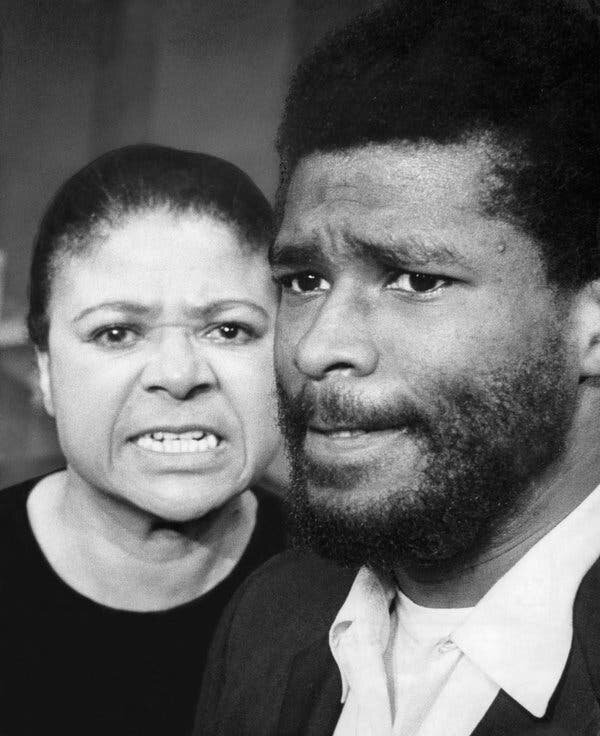 Photo Credit: New York Times
Photo Credit: New York Times
Ms. Jeannette was later cast in such Broadway productions as The Skin of our Teeth (1975), Amen Corner (1965), and The Great White Hope (1968). She also wrote, directed, and produced plays, and in the mid-1960s and 1970s, she appeared in films, including Shaft and Cotton Comes to Harlem (1970). In 1979 Ms. Jeannette founded the still-thriving H.A.D.L.E.Y. Players (Harlem Artists Development League Especially for You) Players. Her goal was to develop theatrical talent and to enrich the cultural life of Harlem in answer to the need for emerging and professional artists, playwrights, and directors of color to develop their skills in the theatre and to enrich the cultural life in the Harlem community. She was recognized as a “living legend” at the National Black Theater Festival 1991.
In television, she lent her talents to both film shorts and documentaries. As a playwright, Jeannette wrote “A Bolt from the Blue,” “Light in the Cellar,” “Gladys’ Dilemma,” and “Who’s Mama’s Baby, Who’s Daddy’s Child?” She has also featured and directed the works of other playwrights.
She continued to act into her 80s and retired from directing at 98.
Honor/Awards
Among Ms. Jeannette’s honors and awards are:
- 1984 Outstanding Pioneer Award for A.U.L.D.E.C.O.;
- The AT&T and Black America Recognition Award for the National Council of Negro Women,
- Manhattan Section;
- The National Black Theatre Festival in Winston-Salem,
- NC in August 1991 for the “Living Legend Award”;
- inducted into the Hatch – Billops Oral History Collection at the Schomburg Center for Research in Black Culture;
- the 1998 Lionel Hampton Legacy Award;
- the Stand on Our Shoulders Award from Delta Sigma Theta,
- Bronx Chapter; was inducted into the Bushfire Theatre Walk of Fame in Philadelphia, PA;
- She was inducted into the Arkansas Black Hall of Fame on October 16, 1999.
- On October 4, 2002, she received the prestigious “Paul Robeson Award” from the Actors’ Equity Association.
- She received three A.U.D.E.L.C.O. Nominations for the 2010 Best Play Revival for her play “Gladys’ Dilemma.”
Her Death
Ms. Jeannette is predeceased by her husband, who died in 1956, and their son, who died at age five in 1940. Ten nephews and six nieces survive her. She passed away on April 4, 2018, at age 103.
Work Cited
Gertrude Hadley Jeannette | National Portrait Gallery. https://npg.si.edu/object/npg_NPG.2016.139
Gertrude Hadley Jeannette’s Biography. https://www.thehistorymakers.org/biography/gertrude-hadley-jeannette-40
Jeannette, Gertrude Hadley – Encyclopedia of Arkansas. https://encyclopediaofarkansas.net/entries/gertrude-hadley-jeannette-7989/
A Life Fully Lived: Gertrude Hadley Jeannette | National …. https://npg.si.edu/blog/life-fully-lived-gertrude-hadley-jeannette
Thursday Open Thread: African-American Centenarians …. https://pragmaticobotsunite2018.com/thursday-open-thread-african-american-centenarians/
Gertrude Jeannette, Actor, Director and Cabdriver, Dies at …. https://www.nytimes.com/2018/04/26/obituaries/gertrude-jeannette-actor-director-and-cabdriver-dies-at-103.html
Gertrude Jeannette Obituary – New York, NY | New York Times. https://www.legacy.com/obituaries/nytimes/obituary.aspx?pid=188742689
Theater legend Gertrude Hadley Jeannette, 103, passes …. https://amsterdamnews.com/news/2018/apr/12/theater-legend-gertrude-hadley-jeannette-103-passe/
Honoring our Veterans: Forgotten History
In history, black veterans have been a threat to Jim Crow and racial subordination. Thousands of black veterans were assaulted, threatened, abused, or lynched following military service. Black veterans who fought for our country often lost their lives after returning home by those they risked their lives to protect.
The GI Bill helped foster a long-term in white wealth but did almost nothing to help build black wealth
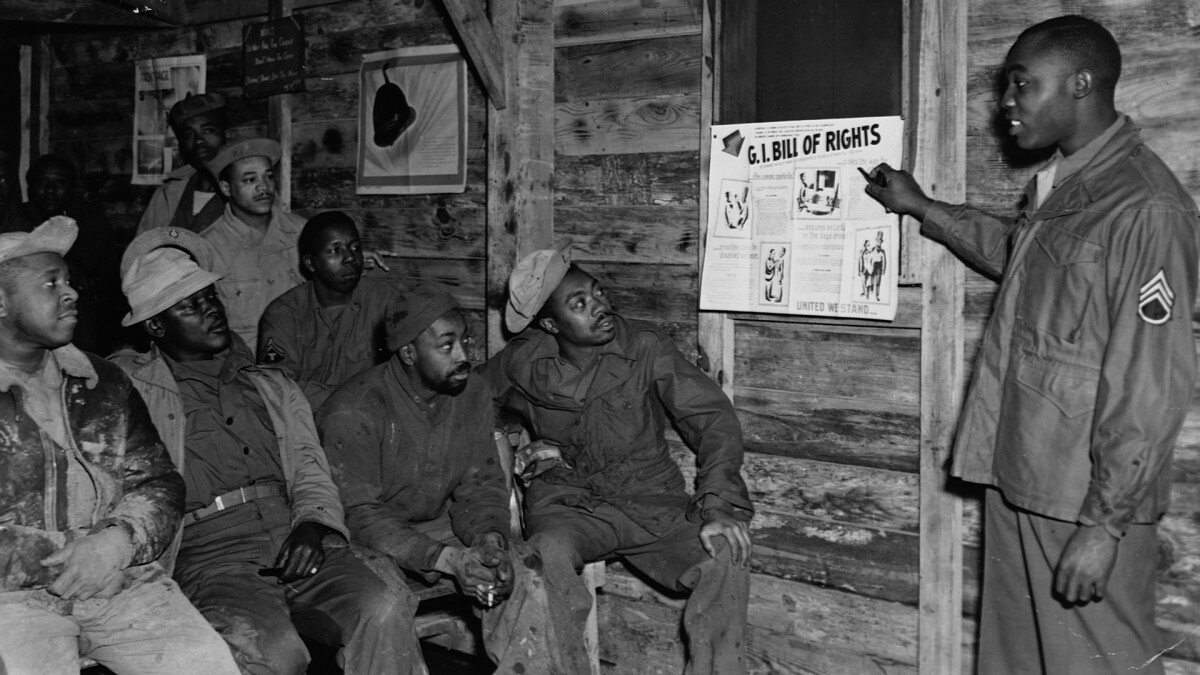
Black veterans from the South benefited the least from the Readjustment Act of 1944 (GI Bill), signed by President Franklin Roosevelt on June 22, 1944. The bill laid the foundation for benefits that would help generations of veterans achieve social mobility that aimed to help World War II military personnel return to civilian life with low-interest mortgages, loans, and unemployment benefits. Many Black who served in World War II never saw these benefits.
There are lots of reasons why white Americans have so much more wealth than nonwhites. Southern banks and mortgage agencies refused loans to minorities. Many southern public universities refused black students’ admission. White veterans got into college with ease, black veterans faced limited options and denial in their pursuit of education. It was only seven states offered post-baccalaureate education to black students, and no accredited engineering or doctoral programs were available to them. The bill increased the number of black veterans attending HBCUs from 1.08 percent in 1940 to 3.6 percent in 1950. The educational and economic gaps between white and black veterans nationally widened.
Black veterans weren’t able to make use of the housing provisions of the GI Bill. White people were able to use the government guaranteed housing loans from this bill to buy homes in the suburbs where Blacks were excluded from the suburbs due to racism. Those homes subsequently increased greatly in value future decades, creating new household wealth for whites during the postwar era.
After the new GI Bill passed in 2008, twenty percent of GI Bill disbursements go to for-profit schools. These schools have a reputation for high dropout rates and are known for targeting students of color, a significant point given the growing racial and ethnic diversity of the military.
Black Homeless Veterans
Veterans are more likely than civilians to experience homelessness, especially if they have low socioeconomic status, a mental health disorder, and a history of substance abuse.
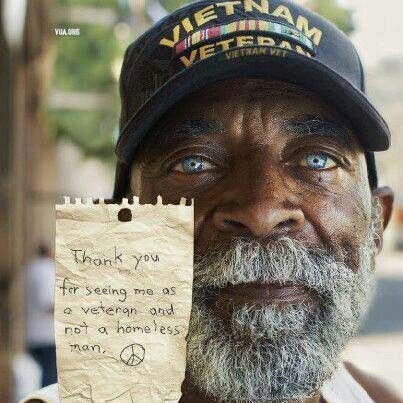
Fifty-six percent of all homeless veterans who served in wars ranging from World War II until Iraq and Afghanistan are Black American or Hispanic. However, Black Americans make up over thirty-four percent of the total number of homeless veterans. “Forty-seven percent served during the Vietnam era while seventeen percent served post-Vietnam, and fifteen percent served pre-Vietnam, respectively.†According to a report conducted by the U.S. Interagency Council on the Homeless.
Over 500 organizations are funding by the U.S. Department of Veterans Affairs to assist homeless veterans. These organizations help veterans with substance abuse, counseling, stable housing, personal access to healthcare, and employment assistance.
The VA served more than 92,000 homeless veterans in 2009. With an estimated 500,000 veterans homeless at some time during the year, the VA reaches 20% of those in need, leaving 400,000 veterans without supportive services. The Department of Labor has about 120 employment assistance programs that help veterans with training and employment preparation assistance.
Work Cited
The First GI Bill and the Disparity for Black Veterans. https://fight4vets.com/the-first-gi-bill-and-the-disparity-for-black-veterans/
Do We Have An Obligation To Prevent The Mass Murder Of …. https://thenewstalkers.com/community/discussion/39322/do-we-have-an-obligation-to-prevent-the-mass-murder-of-people-in-other-countries-throughout-the-world
How the GI Bill Left Out African Americans | Demos. https://www.demos.org/blog/how-gi-bill-left-out-african-americans
Veteran Homelessness – National Alliance to End Homelessness. https://endhomelessness.org/resource/veteran-homelessness/
Homeless Black Vets:The Fight After the War • EBONY. https://www.ebony.com/news/homeless-black-vets-the-fight-after-the-war/
Honoring Our Veterans: A Talk with A Woman Vet
Podcast Notes
Introduction
Sharmell: I want to introduce this exceptional person today; her name is ‘Charica. Hey, Hey, she is from Columbus, Ohio. OH-IO and she’s 31. She attended Columbus East High School. Go Tigers! She graduated from Ohio Dominican College and then……………. let’s bring Charcia in for the truth.
Vanessa: this special episode talking mainly about her as a Veteran. As you know, that is a critical position.
Charcia, can you tell us a little bit about your experience as a vet in the army? is that correct?
Charcia: Yes, OK. I joined the army…I should say I enlisted into the army in February of 2011 at 22.
Vanessa: What made you decide to go into the army?
Charcia: I was looking more for stability, financial stability than anything. I had already lost one of my parents, my mom, sooner than I had expected. I didn’t have brothers and sisters here that I was kind of like leaning on the family just wasn’t uh in my for dogs at that time I just felt like I needed to establish myself somewhere and so I joined the military.
Vanessa: OK, well, what year did you say that was around 2011. I see it is from 2016, and tell me if this is accurate for you when you were serving, but so non-Hispanic whites say 77% of them helped, whereas 7% of them are Hispanic, 12% being black and then 2% is Asian. I know it may be hard to get a percentage off when you serve, but how many or how many do you think were serving around that time?
Charcia: I will say this probably accurate. I don’t feel like we were the majority at all. We were one of the minorities there. We had some Asians, a lot of Caucasians. There were some blacks, but the blacks that were there were the older veterans, the ones that joined back in the 80s and 90s. These people are moving out for retirement, so as far as young kids and enlisted when I was in…. it wasn’t many blacks.
Vanessa: So, are you familiar with any history dealing with veterans?
Charcia: I am just starting to talk to my dad about how Vietnam was and when he came back, and that has been interesting. He was mentioning how, when he did come back, he wasn’t welcome by the Americans. There’s a lot of history, and that war was a televised war. Now, for instance, they aren’t televised. Now everything is kind of under the radar but there’s such a significant difference now from Vietnam. I mean they were just spat on, they were ridiculed for that…. and so hearing about that, the fact that that’s something that he had to deal with and to know he was drafted as well……. It wasn’t a choice that he made himself just not being able to come back and be welcome as he should’ve been along with his fellow comrades in history. I’m learning about that!
Vanessa: Did you know all this before?
Charcia: You know my dad and I are very close, and even now, he’s not that open about it. When it comes to what he experienced, many veterans want to talk to other veterans about it. They don’t like it to be broadcast it and so for him to even tell me what he’s told me is a stretch pretty vast for him.
Vanessa: So can you tell us any stories that you can remember you saw, or you experience related racism or sexism?Anything like that.
Charcia: Oh definitely sexism, but not racism. I won’t say that I have actually seen it. I haven’t experienced that or even seen it for that matter but sexism because women are the minority in the military anyway. So I’ve had instances wherein a dorm fitness test being counted for my push-ups and setups and I have to do a two-mile run under a certain amount of time. Well, sometimes men in the army don’t like for women to progress, or sometimes they feel like they don’t want you to be ahead. I’ve had instances where a male soldier was counting my push-ups and end up stopping. He didn’t count my push-ups anymore.
The first American woman of African heritage to receive a patent!
Sarah E. Goode was an entrepreneur and inventor. She was the very first American woman of African heritage to receive a patent from the United States Patent and Trademark Office 1885 (Patent #322,17).
Â
Â
Podcast Notes
Sarah E. Goode: The First Black woman to receive a patent and Trademark
Sarah Elisabeth Goode
Sarah E. Goode was an entrepreneur and inventor. She was the first American woman of African heritage to receive a patent from the United States Patent and Trademark Office in 1885 (Patent #322,17). Although there is still a debate over who was the first recipient of the patent number, some say Judy Reed 1884 patented a dough-kneading machine. However, Reed only signed her patent with her mark (x), not her signature. We should celebrate and honor their accomplishments, but I am writing about Mrs. Goode for this blog post. Her accomplishments have allowed many black women to come after her for patents and inventions.
Early age
In 1856, Sarah Jacob was born in Toledo, Ohio as a slave but gained freedom at the end of the Civil War. She was the second child of seven children to Mr. and Mrs. Oliver and Harriet Jacobs. Upon emancipation, she migrated to Chicago, Illinois. She met her future husband in Windy City, Archibald Goode, who was a native of Virginia. The two married in 1880. The couple saved to purchase, own, and operate a furniture store that year.
The Invention
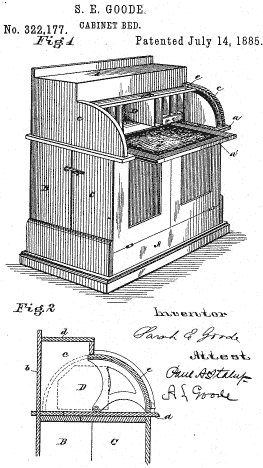
As the furniture store owner, she noted that city apartment dwellers often had little space for beds, and her customers often complained that they had no room for furniture or storage spaces. To solve the problem, she created a prototype of the Folding Cabinet Bed that would be used to sleep at night and as a roll-top desk during the day. She conceived the design of what we know today as the “hideaway” bed. She described the plan as “a folding bed” whose hinged sections were easily raised or lowered. Goode’s invention could be a desk when not in use as a bed. Goode received her patent in July 1885. One could guess that Sarah got her knowledge of carpentry and entrepreneurship experience from watching her father and her husband, both carpenters.
A similar style of bed was patented more than thirty years later in 1916 as the Murphy bed, which is a bed that folds out of a wall or cabinet to provide extra space in your bedroom.
Her family life
Goode’s name appears in the Cook County, Illinois, US Census for 1880, when she lived with her husband Archibald, her daughter, and several boarders. According to these records, the couple had six children, of whom three would live to adulthood. Her age is 24, giving her a birth date of around 1856. She is listed as Mulatto, as is her daughter, but her husband, Archibald, is listed as White.
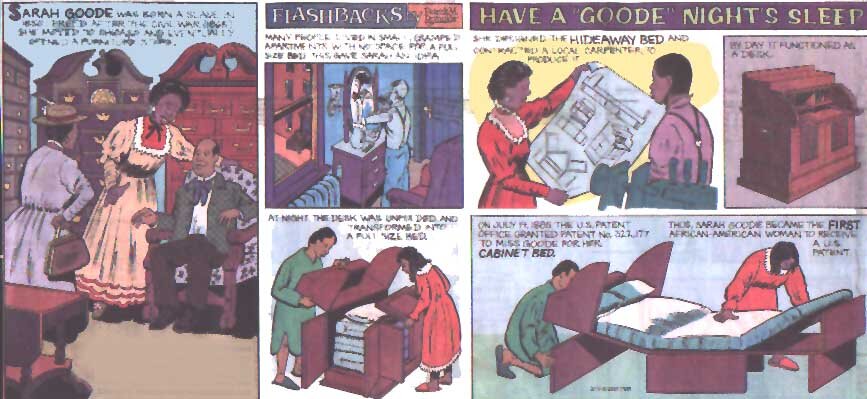 Photo Credit: Innov8tiv
Photo Credit: Innov8tiv
Summary/Facts about Sarah G. Goode
- Sarah E. Goode became the first African-American woman to be granted a patent in 1885 for her innovation of a folding cabinet bed. The bed’s ability to be folded and transformed into a desk makes it a useful space-saving option for small dwellings.
- 1855 she was born to a carpenter’s father in Toledo, Ohio. Goode’s father taught her carpentry skills, and she later succeeded as an entrepreneur.
- After moving there, Goode and her husband established “Goode & Company” as a furniture company in Chicago in 1885. The shop offered her a unique cabinet bed, furniture, and home goods.
- Goode fought to better the lives of African Americans in Chicago and was a committed member of her community. She belonged to the Colored Women’s League and Olivet Baptist Church.
- Sarah E. Goode was a successful actress, but little is known about her personal life, and there aren’t many images of her. Her reputation endures as a pioneer for African-Americans and women in invention and entrepreneurship.
Conclusion
Sarah Goode died in Chicago in 1905 and was buried in Graceland Cemetery. In her honor, a school was named after her in Chicago. The Sarah E. Goode Stem Academy is an institution that gives exposure to gifted students in math and science.
Bibliography
Willie Fay Schroeder Obituary – Odessa, TX. https://www.dignitymemorial.com/obituaries/odessa-tx/willie-schroeder-6872718
Sarah Goode Becomes First African-American Woman to …. https://worldhistoryproject.org/1885/7/14/sarah-goode-becomes-first-african-american-woman-to-receive-a-patent
Sarah Goode: Entrepreneur and Inventor – thoughtco.com. https://www.thoughtco.com/sarah-goode-inventor-4074416
Sarah E. Goode Biography, Life, Interesting Facts. https://www.sunsigns.org/famousbirthdays/d/profile/sarah-e-goode/
Chicago teachers demand education justice and equality
Chicago Teachers have on strike for the 9th (now 10th) day. They are fighting for smaller class sizes, special education needs, librarians, social workers and more.
Black and brown students are suffering the most from the inequity in Chicago’s public schools. The lack of Black teachers is also a concern.
The statistics provided below are from the CPS website.
Students
Total: 361,314 (2018-2019 20th Day Enrollment)
Student Enrollment
Preschool: 17,668
Kindergarten: 24,128
Elementary (1-8): 213,651
Secondary (9-12): 105,867
Additional student information
Economically Disadvantaged Students: 76.6%
English Language Learners (ELL): 18.7%
Students with IEPs: 14.1%
Student Racial Makeup
African American: 36.6%
Asian: 4.1%
Asian/Pacific Islander (retired): 0.0%
Hawaiian/Pacific Islander: 0.2%
Hispanic: 46.7%
Multi-Racial: 1.2%
Native American/Alaskan: 0.3%
White: 10.5%
Not Available: 0.3%
Information provided by the Office of School Quality Measurement. To see detailed reports about these and other measures, click here. Last updated in October 2018.
Employees
All totals reflect unique employee count
All Staff
Public schools: 31,765
Non-public schools: 95
Citywide: 4,115
Central Office/Network: 1,400
Total Employees: 37,375
Principal Racial Breakdowns
African-American: 44.4%
Asian: 0.6%
Hawaiian/Pacific Islander: 0.0%
Hispanic: 16.8%
Native American: 0.4%
White: 34.4%
Multi-Racial: 1.0%
Unknown: 2.3%
Total Principals: 511
Racial Breakdowns (All Staff)
African-American: 32.7%
Asian: 2.9%
Hawaiian/Pacific Islander: 0.0%
Hispanic: 25.4%
Native American: 0.3%
White: 35.1%
Multi-Racial: 1.2%
Unknown: 2.3%
Teacher Racial Breakdowns
African-American: 20.7%
Asian: 3.9%
Hawaiian/Pacific Islander: 0.0%
Hispanic: 21.2%
Native American: 0.4%
White: 50.4%
Multi-Racial: 1.5%
Unknown: 1.9%
Total Teachers: 21,334
Is it important to have a black teacher? A 7-year-old and a 5-year-old boy and a father were asked this question.
[youtube=://www.youtube.com/watch?v=avegNG684Wg&w=854&h=480]
Mental Health in the Black Community and how Faith played a Part!
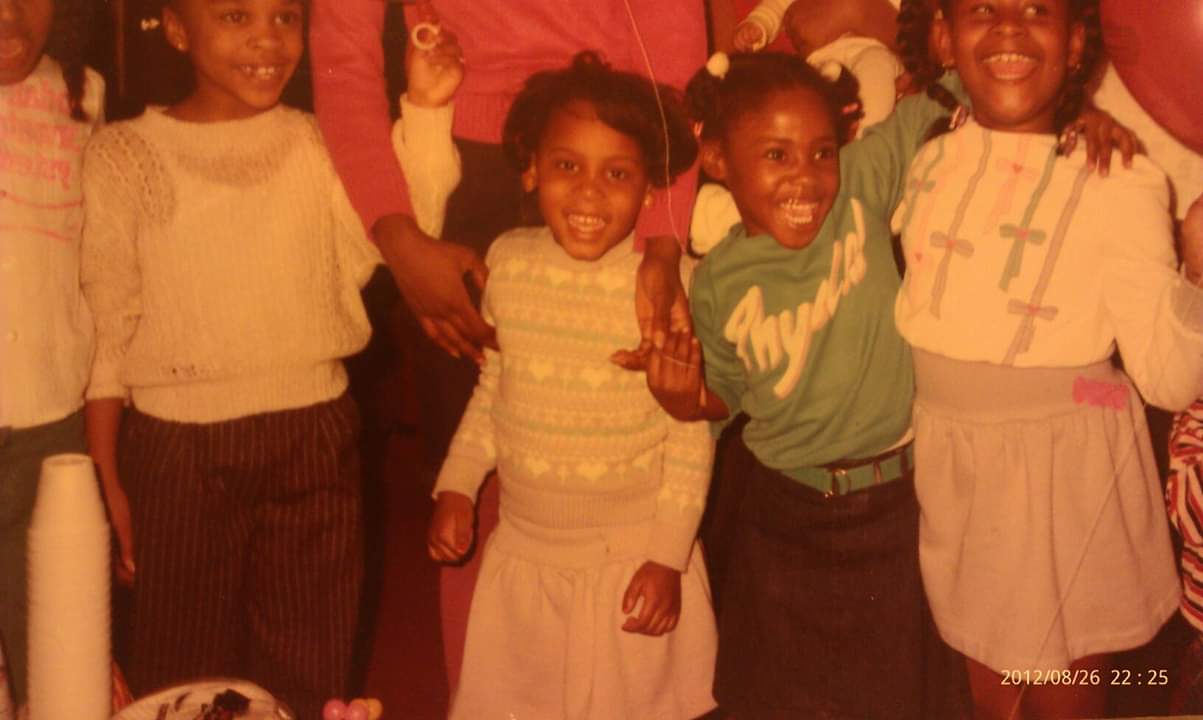
Teller: Asia Cross
Asia has ten years of experience in the social service industry. She graduated from Columbia College. She has worked with children and adults with vocational training, cognitive disabilities and mental health. Asia currently works for two deliverance and inner healing ministries, God Therapy and Divergence.
Mental Health as it relates to the Church and the Black Community
Tell me stories that you have encountered working in the social service industry.
Asia: There is a high population of African-Americans that is placed in the home, through DSFC.
How do they get placed there?
Asia: It could be through the courts, their behavior of a young adult who is not diagnosed but has “bad†behaviors, parents, several different ways.
What age range?
Asia:16-25. I worked with them, starting at 16, not younger.
How is the diagnosis determined?
Asia: Most of the time, it at school through an IEP because of bad behavior in school.
What is this facility? Do they live there?
Asia: Yes, It’s a traditional home. The goal was to teach them based on living skills. It’s to help them find employment and etc.
The one I worked with the state was the guardian and not the parent since they came from DSFC
Other topics of discussion
Client experience
-
A female client had lots of trauma
-
Faith played a large part as a believer in working with these individuals.
-
Knowing the stories of the people were key to working with them. You could research the clients or not
Facility
-
They had houses throughout Chicago.
-
Five bedrooms with five people
Faith
-
Things would happen that you couldn’t explain
-
A girl told her she would run away and hearing voices about killing herself and her. She told her she couldn’t hurt her because she has angels.
-
Laying on hands and deliverance
-
Deliverance “The casting out of demons.â€
What advice would you give someone that is having a mental health illness, diagnosed or not diagnosed?
-
Self Care!
What can we do as a black community to address the issue of Mental Health?
-
Talk about it!
-
Go to the groups available.
-
Pray and do the work!
-
Therapy



